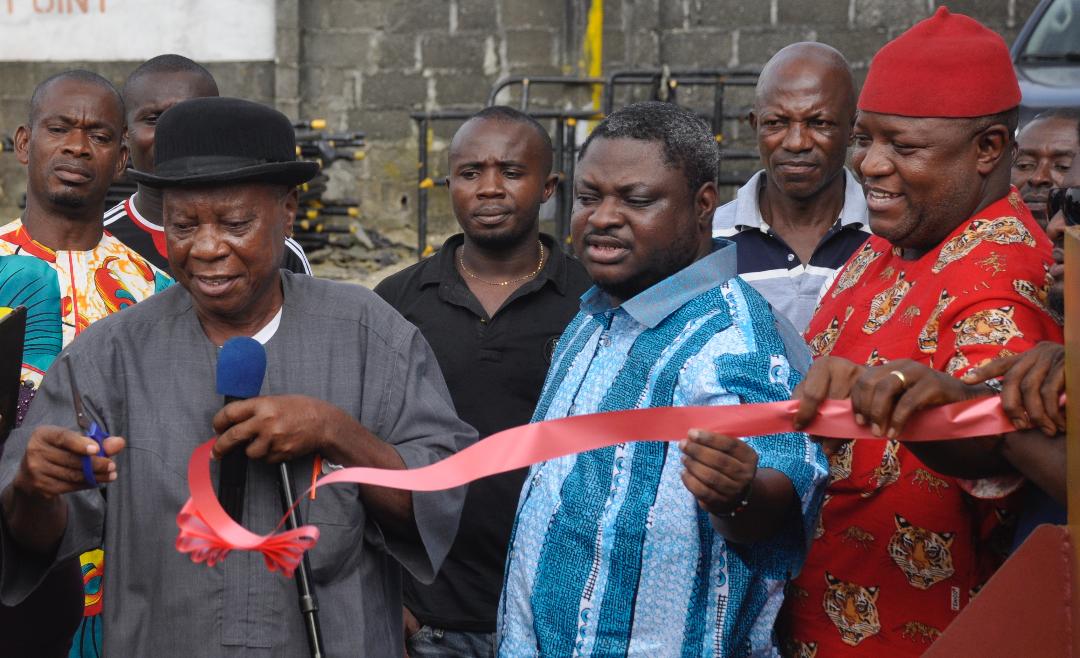At the onset of the just ended first tenure of President Muhammadu Buhari in 2015, the administration came with humongous assurance that it is setting up a template that will between 2016 and 2019, deliver template that will add 10,000MW electricity wheeling capacity by 2020.
Business Hilights recalls that the Transmission Master Plan (TMP), planned to gulp N805.7 billion ($2.238billion) during the rolling plan will on meeting the 2020 target, further wheel capacity of 15,000MW by 2025.
Within the design stage supervised by former Minister of Power, Works and Infrastructure, Mr Babatunde Fashola, the Federal Government came up with a finance options from about eight foreign banks as well as donations from the World Bank.
At a recent stakeholders’ meeting, there were serious confusion on the divided views of key players in the system. For example, while the Managing Director of the Transmission Company of Nigeria (TCN), Usman Gur Mohammed, kept assuring that the plans were feasible and still on track, leading industry analysts and experts lead by former Chairman of the Nigerian Electricity Regulation Commission (NERC), Dr. Sam Amadi, and the Executive Secretary, Association of Power Generation Companies (APGC), Dr Joy Ogaji, made it clear that the plan cannot fly considering the prevailing conditions in the industry.
Just as TCN kept telling stakeholders that it has about 8,100MW transmission capacity, but in the real sense, only an average 4,00WM is available to power, industry pundits who are aware of steady epilepsy in power supply since 2016 see TCN claims as part of government propaganda.
In his argument, Dr Amadi made it clear that with the poor level of investments in the sector over the last couple of years, “There is no basis to expect such miracle in six months. With the capacity in execution that we have seen so far, the sector cannot operate at that level of efficiency.”
We generally believe that transmission is the main bottleneck; if power is not evacuated then the DisCos can’t supply and when there is transmission failure everything is affected. So we need to expand to enhance the capacity and reliable grid. But it is counter-intuitive in a sense, because if DisCos are inefficient, then they will hobble the reliability of transmission.
According to him, even though the transmission arm of the value chain receives investment shares alongside the distribution segment, challenges in wheeling produced power remain the main bottleneck of Nigeria’s electricity supply system.
Continuing, Amadi averred that “Grid failure on the Discos’ side also affects transmission capabilities. So failure in the industry is self-reinforcing. We need quality spending on all sides of the value chain, but since DisCos and Gencos are privately owned, government shouldn’t be spending on them but rather enhance financial sector willingness to invest in them.”
He was quick to reveal that what government has failed to agree is that the transmission network in the country is outdated, thereby a wide range of assets are scattered across the country, which require urgent repair and systems upgrade that are not ready to come.
Recall that the Federal Government, through the former Minister of Finance, Mrs Zainab Ahmed, at the recent World Bank meeting in US, had discussions with the bank for a $1bn facility which she never concluded before the end of the tenure in office.
Checks on her valedictory address did not show any form update on the chances of getting the facility from the World Bank any time sooner, an indication that the World Bank may have suspended further action on the matter.
The Minister had noted that larger part of the World Bank facility would have gone into the TCN’s master plan which centred on the Transmission Rehabilitation and Expansion Plan (TREP), driven by the Nigeria Electricity and Gas Improvement Project (NEGIP).
However, in her argument, Dr Ogaji did not miss any word stressing that “the current Key Performance Indicator (KPI) from the transmission segment does not support the feasibility of the plan.”
“We have just about six months to next year. We are told there is 8,100MW but Nigerians are not fools, the capacity is not realistic,” AGGC Executive Secretary argued.








